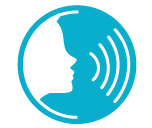Traditional speech therapy vs. intensive MPI-2 treatment for stuttering
Many of my clients have asked me what the difference is between traditional therapy and the intensive program that I offer. For the most part, the answer is simple: If you would like to simply work on improving your fluency, then the intensive program is the right type of treatment approach for you. Specifically, MPI-2 treatment program works specifically on creating a “detour” in the way that we are speaking, and teaching us a new, more connected way of speaking, while easing into words. This would result in less struggle as we’re communicating. This type of program takes about 3-4 months to complete in order to achieve desired results. The traditional speech/stuttering therapy approach, however, involves going at one’s own pace. Here at Clearversation, we focus not only on managing our speech fluency using valuable techniques, but we’re also working towards overcoming our stuttering as a whole. As a speech-language pathologist, who stutters, I like to combine the two, even when working with clients intensively. It is one thing to desire and work towards fluency, but it is another to be OK with sometimes having some stuttering and not feeling like a complete failure. That is the main reason why I incorporate the psychological aspect together with either the intensive or the traditional treatment that I offer. The intensive program is not suited for children; it is only for adults ages 17+. Over the past 5 years, I have seen adults come away very happy with the way that they sounded after the intensive program, especially when the acceptance piece was incorporated into the therapy. If you or someone you know struggles with their speech/stuttering, traditional therapy and/or intensive therapy would be their best bet. Most importantly, getting evaluated by a licensed speech—language pathologist, specializing in stuttering, would be the first step toward getting the help necessary to achieve success.



Leave a Comments